Only when the soil meets the needs of plants, they can thrive magnificently. What are the characteristics of a fertile garden soil? Can you determine the soil quality yourself?
- Determining the soil quality also makes sense in the hobby garden
- Soil quality influences the success of the harvest
- professional soil analysis shows causes of poor development
- important properties can be recognized even by laymen
- first hints are given by indicator plants
Contents
- 1 Garden soil
- 2 Recognizing fertile soil
- 3 rubbing test
- 4 press test
- 5 Sandy soil
- 6 Clay soil
- 7 Clay soil
- 8 Lime soil
- 9 Color: Lime soil has a light gray to coloration.
- 10 Necessary soil nutrients
- 11 Observe indicator plants
- 12 Frequently asked questions
- 13 What information does the soil analysis in the laboratory provide?
- 14 What does a professional soil analysis cost?
- 15 What results do soil test sets offered in the trade provide?
- 16 From what depth should samples be taken for a soil analysis?
- 17 Author
Garden soil
If plants do not thrive properly in the garden, various causes come into question. Are the light conditions at the site suitable? Shade plants do not thrive in full sun, and plants that need light cannot develop optimally in the shade. How much water does the species need? Make sure there is adequate watering. Prevent waterlogging; many garden plants are sensitive to it.
If you have checked these characteristics, the soil quality could be the cause of puny growth.
The garden soil is a mixture of:
- Sand
- Loam
- Clay
- Silt
Note: The term “silt” indicates weathered rock.
Recognizing fertile soil
What characteristics identify fertile soil? If your garden has gorgeous flowers blooming and lush greenery, these are clear signs.
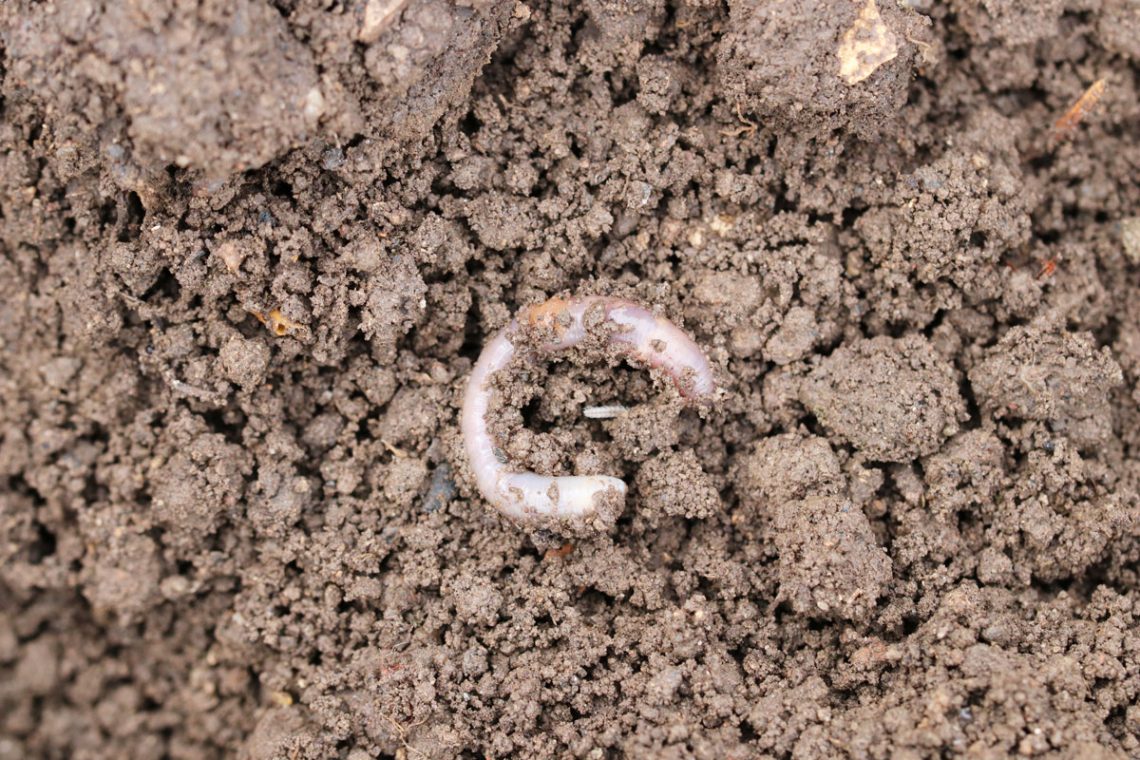
Features for fertile soil:
- dark brown color
- earthy smell
- crumbly consistency
- no unpleasant odors
The optimal garden soil for vegetable growing consists of
- 35 to 55 percent sand for good permeability
- 10 to 25 percent clay for good water retention
- 25 to a maximum of 45 percent silt
First analysis options
You can tell the quality of your garden soil by doing some simple tests. To do this, dig up some garden soil.
rubbing test
Take some soil between your thumbs and index fingers and rub them together.
Does it feel like sandpaper? This is a first indication of sandy soil.
Does the soil feel supple? Then this is a sign of a high clay content.
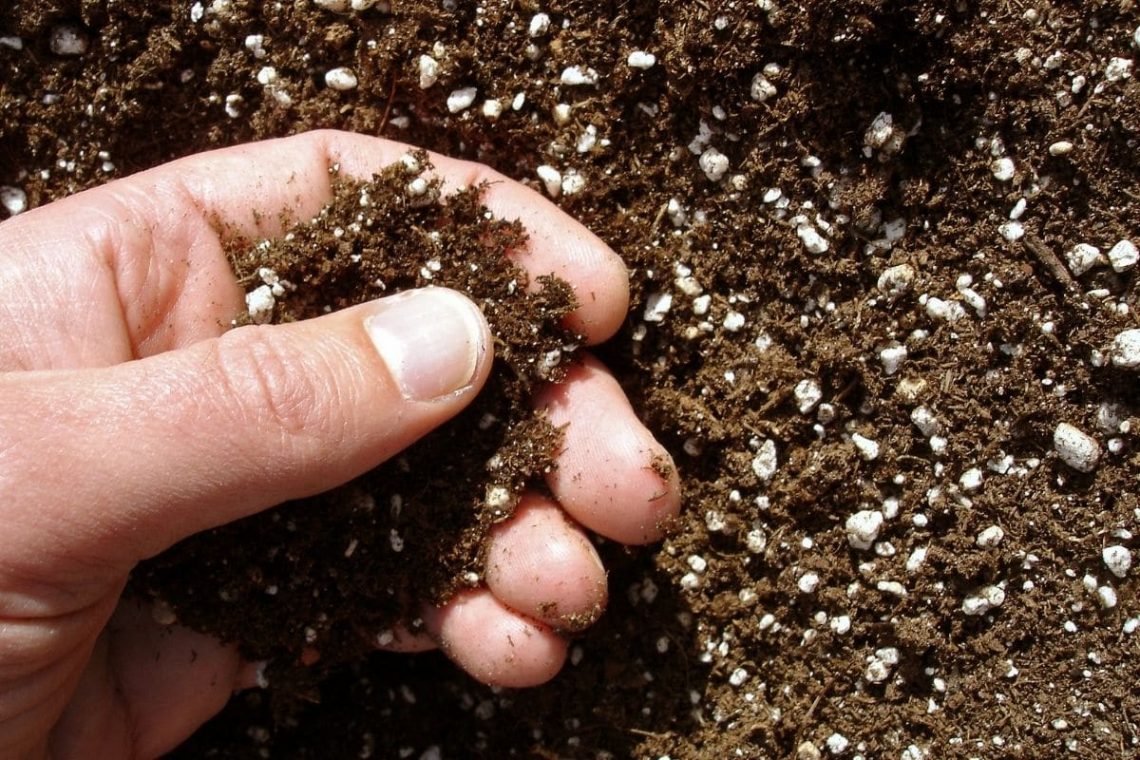
press test
Take a handful of soil and press it firmly.
If the soil trickles through your hands, the sand content is very high. Lime soil also does not stick together during the press test.
If the soil clumps and sticks to your hands, it is a sign of high clay or loam content.
Sandy soil
| Advantages | Disadvantages |
|---|---|
| warm good permeability good aeration easy to plant fast water absorption easy harvesting | low in nutrients low support of the roots extensive watering required frequent fertilizing necessary |
Tips for soil improvement: Sandy garden soil can be improved by laying grass mulch.
Color: Sandy soil has a light, gray-brown color.
Clay soil
| Advantages | Disadvantages |
|---|---|
| can store water well suitable for most garden plants very fertile little watering required | insufficient aeration regular loosening necessary danger of compaction after long rains harvesting of root vegetables difficult |
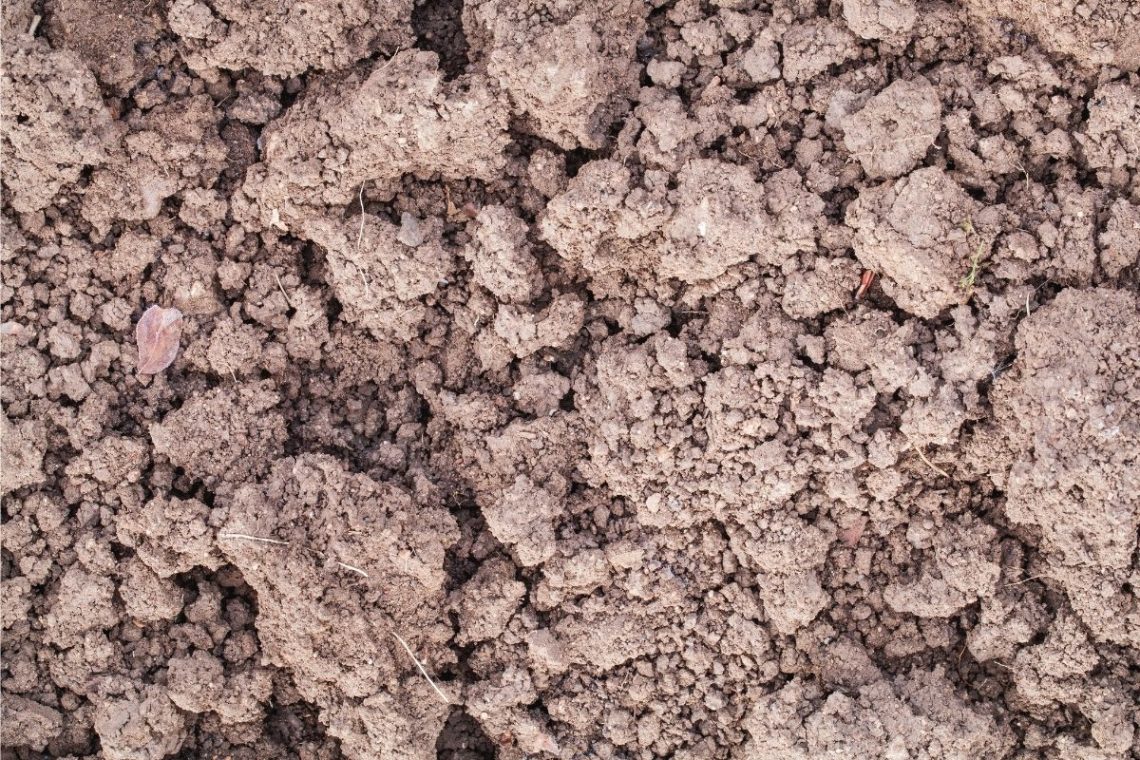
Tips for soil improvement: By mixing in sand or lime, you can loosen the clay soil and support permeability.
Color: Clay soil is ocher to brown in color, depending on the clay content.
Clay soil
| Advantages | Disadvantages |
|---|---|
| can store water well easy to fertilize suitable for most garden plants fertile little watering required | poor ventilation very dense regular loosening necessary chopping work very strenuous danger of compaction after long rains harvesting of root vegetables difficult |
Tips for soil improvement: By mixing sand, lime or wood chips you can loosen the clay soil and support permeability.
Color: Clay soil can be recognized by the reddish color.
Lime soil
| Advantages | Disadvantages |
|---|---|
| fast heating good heat retention | very low in nutrients can hardly store water much irrigation required difficult soil cultivation |
Soil improvement tips: Calcareous soil must be regularly improved with compost to allow the cultivation of crops. Lime soil benefits from mulch amendments.
Color: Lime soil has a light gray to coloration.
Acidic or alkaline
The pH of the soil has a decisive influence on the development of your plants. A distinction is made between acidic, alkaline and neutral soil.
pH between 6.5 and 7.5: neutral
below 6.5: acidic
above 7.5: alkaline
You can easily check the pH value of your garden soil.
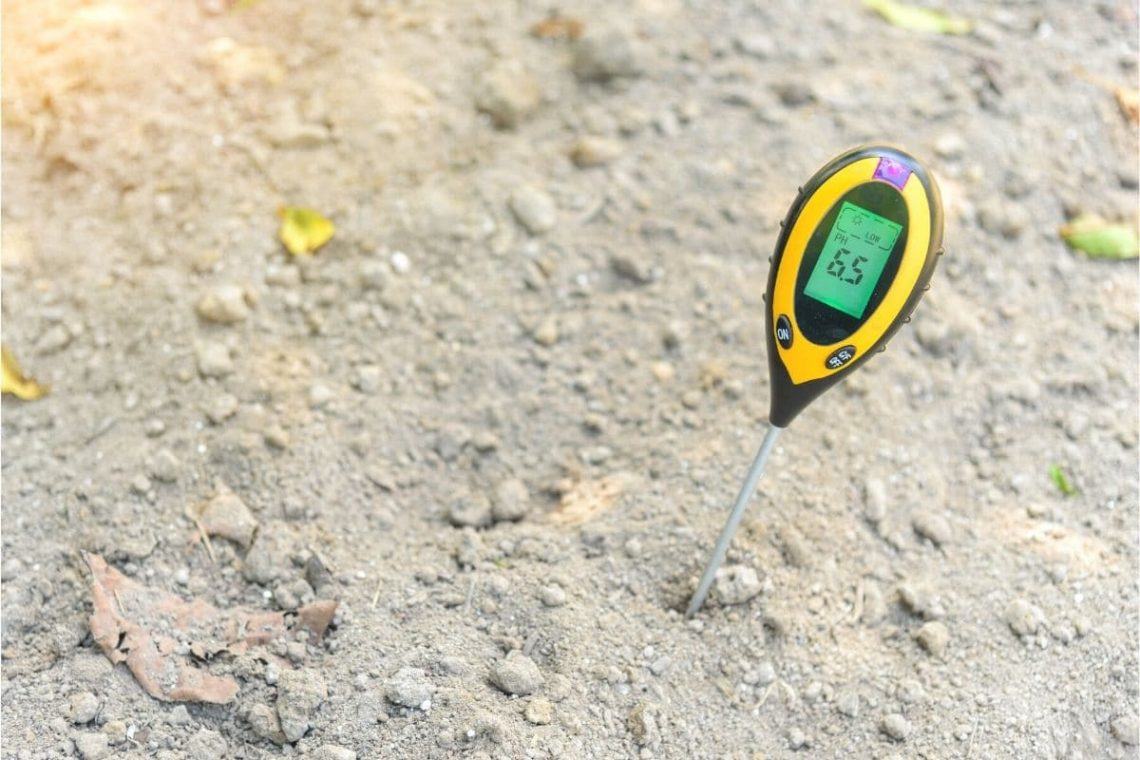
Instructions
Mix a handful of garden soil with a quart of distilled water. Hold litmus paper in the mixture and read the result. Alternatively, you can use soil test kits available at garden supply stores or hire a lab to do the testing.
Plants that require acidic soil are called bog plants. A typical representative is rhododendron. In contrast, few plants thrive in alkaline soil. Representatives with these special requirements are thistles, mustard, poppies and conifers. Most garden plants prefer neutral soil.
Necessary soil nutrients
Garden plants need for their growth especially
- Magnesium
- Phosphorus
- Potassium
Important trace elements that contribute to the vitality of ornamental and useful plants are
- Iron
- Zinc
- Manganese
- Sodium
- Boron
- Sulfur
- Copper
Note: Not only nutrient deficiencies, but also too much fertilizer can damage plants. Poor growth, yellow leaves, diseases and pest infestation are typical signs.
Observe indicator plants
Pay attention to the so-called indicator plants in your garden. Weeds are also of interest. The pointer plants can give initial information about the soil quality before a soil analysis.
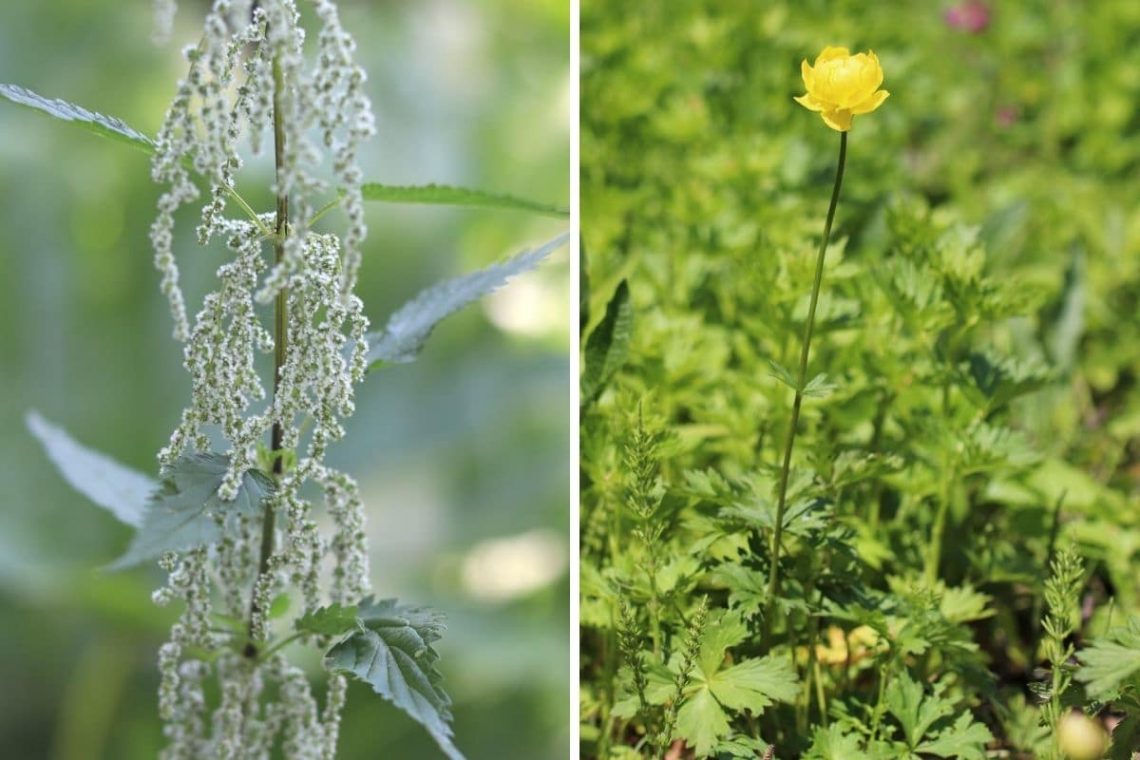
- Soil rich in nitrogen: Stinging nettle, dandelion
- Soil poor in nitrogen: wall pepper, toadflax, meadow margarite
- Acidic soil: sorrel, arnica, wood sorrel
- Alkaline soil: corn poppy, field bindweed
- Moist soil: troll flower, coltsfoot
- Dry soil: Dyer’s chamomile
- Compacted soil: Field horsetail, creeping buttercup
Frequently asked questions
What information does the soil analysis in the laboratory provide?
A professional soil analysis will provide you with information about the soil type, the pH value and the concentrations of the most important minerals and trace elements. On the results, the experts give tips on fertilization and soil improvement.
What does a professional soil analysis cost?
The cost depends on the scope. A soil quality analysis for hobby gardeners costs about 20 to 30 euros. Elaborate analyses with detailed information on minerals and heavy metals are available for about 50 euros.
What results do soil test sets offered in the trade provide?
You can obtain various sets for determining soil quality in gardening stores. These are easy to use. On the basis of a color scale you get statements about the pH value.
From what depth should samples be taken for a soil analysis?
If you want to have the garden soil tested for vegetable cultivation, you should take a sample from a depth of about 20 centimeters. To determine the proper location for fruit trees, sampling from 50 to 60 centimeters is required. Professional soil testers take a so-called drill stick to help with deep samples.

